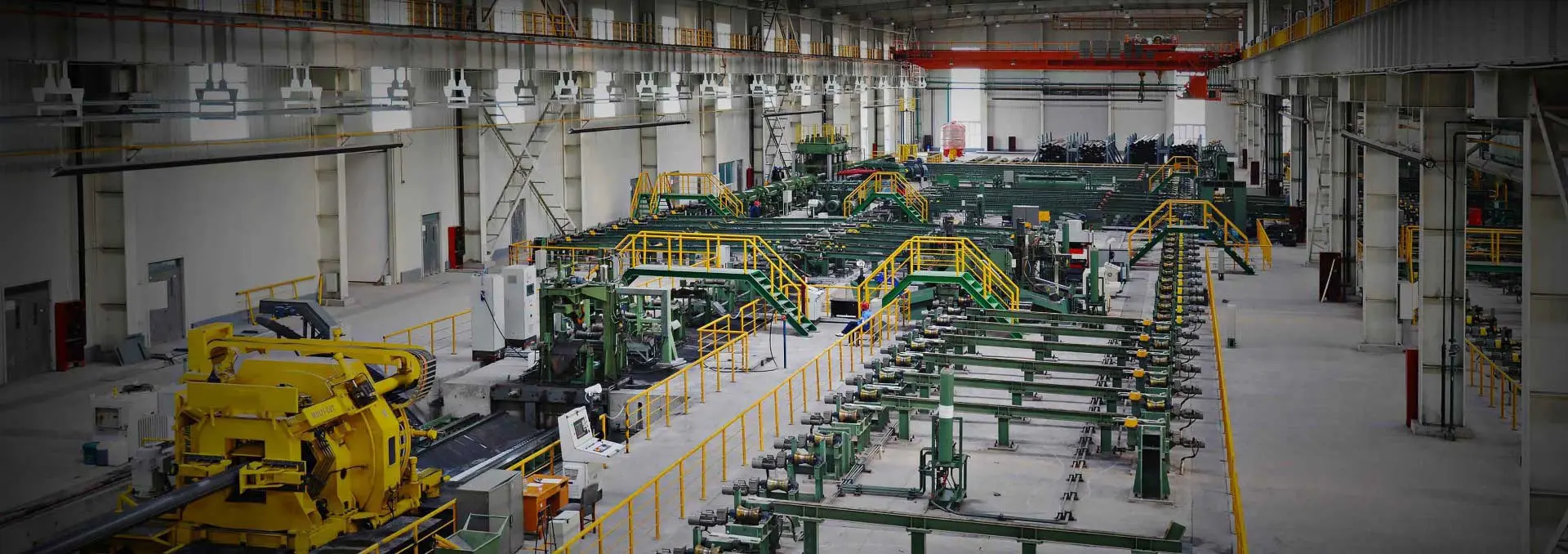ASTM A333 Grade 6 is a specification for alloy steel pipes designed for use in low-temperature service. This grade is specifically formulated for use in environments where temperatures can drop to extremely low levels, ensuring that the steel maintains its strength and resistance to brittle fracture. Below is an overview of the characteristics, applications, and key considerations for ASTM A333 Grade 6 alloy welded steel pipes.
1. Characteristics of ASTM A333 Grade 6 Alloy Welded Steel Pipe
ASTM A333 Grade 6 alloy steel pipes are typically welded and made from carbon steel or alloy steel with special composition designed to perform well in low-temperature environments. Their key characteristics include:
Low-Temperature Resistance: ASTM A333 Grade 6 is specifically designed for cryogenic applications or environments where temperatures can be as low as -50°F (-45°C). The alloy maintains its mechanical properties at these low temperatures, preventing brittleness or failure.
Strength and Durability: This grade of pipe exhibits excellent tensile strength and impact resistance, making it suitable for pipelines subjected to high stress or harsh environmental conditions.
Weldability: ASTM A333 Grade 6 pipes are designed to be easily welded using conventional welding methods, making them ideal for use in the construction of pipelines, pressure vessels, and other welded steel structures.
Corrosion Resistance: Though not as corrosion-resistant as stainless steel, alloy steel pipes conforming to ASTM A333 Grade 6 still offer adequate protection against corrosion in low-temperature environments, especially when treated with coatings or additional protective layers.
2. Applications of ASTM A333 Grade 6 Alloy Welded Steel Pipe
ASTM A333 Grade 6 alloy welded steel pipes are commonly used in industries where low temperatures are a factor, and reliability is paramount. Typical applications include:
Oil and Gas Industry: These pipes are often used in the transportation of natural gas and other liquids at very low temperatures. They are critical in maintaining the integrity of pipelines that traverse frozen or sub-zero climates.
Cryogenic Services: ASTM A333 Grade 6 pipes are frequently employed in the construction of cryogenic tanks and systems that handle liquefied natural gas (LNG), liquefied petroleum gas (LPG), and other cryogenic materials.
Power Generation: These pipes are used in the cooling systems of power plants, particularly those located in cold climates where temperatures may fall below freezing.
Industrial Processes: In industries where processes operate at very low temperatures, such as chemical plants, food and beverage processing, and air separation units, ASTM A333 Grade 6 pipes provide the necessary strength and durability to withstand extreme conditions.
3. Specifications and Standards of ASTM A333 Grade 6 Alloy Welded Steel Pipe
ASTM A333 Grade 6 steel pipes are manufactured according to the ASTM A333 standard, which defines the mechanical properties and testing requirements for these pipes:
Material Composition: ASTM A333 Grade 6 pipes are typically made from carbon steel with a small percentage of manganese, nickel, and chromium. These elements improve the steel's low-temperature toughness.
Mechanical Properties: The steel pipe must meet specific tensile strength and yield strength requirements, which vary depending on the pipe's diameter and wall thickness. Common requirements for ASTM A333 Grade 6 steel pipes include:
Tensile Strength: 60-85 ksi (415-585 MPa)
Yield Strength: 30 ksi (205 MPa) minimum
Impact Test: The pipe must pass Charpy V-notch impact testing at low temperatures to ensure it can withstand sudden impacts without fracturing.
Dimensions and Tolerances: ASTM A333 Grade 6 pipes are available in a variety of sizes and wall thicknesses, with OD (outside diameter) ranging from 1/8” to 48” and wall thicknesses from Schedule 40 to Schedule 160 or even heavier.
4. Considerations for Selection and Use of ASTM A333 Grade 6 Alloy Welded Steel Pipe
When selecting ASTM A333 Grade 6 alloy welded steel pipes for specific applications, the following factors should be considered:
Temperature Range: Ensure that the low-temperature service conditions are within the specified limits for ASTM A333 Grade 6. While the pipes perform well in sub-zero temperatures, they may not be suitable for extremely high temperatures.
Corrosion Resistance: While the steel provides adequate resistance to corrosion in low-temperature conditions, it may require additional coatings or corrosion-resistant treatments if used in environments where corrosion is a concern.
Welding and Fabrication: Proper welding procedures should be followed to maintain the mechanical properties of the alloy steel. It’s essential to use suitable filler materials and pre- and post-welding heat treatments to avoid cracking or weakening the pipe at welded joints.
Testing: Ensure that the pipes undergo rigorous testing, including hydrostatic testing, impact testing, and dimensional checks, to ensure compliance with ASTM A333 standards.

 English
English Español
Español




 Tel : +86-18565811709
Tel : +86-18565811709 Email :
Email : 
 News
News




